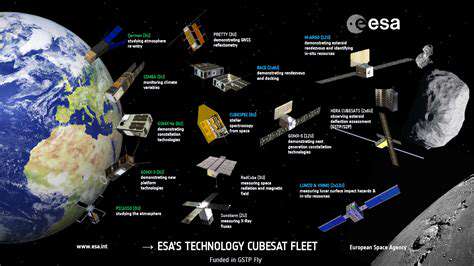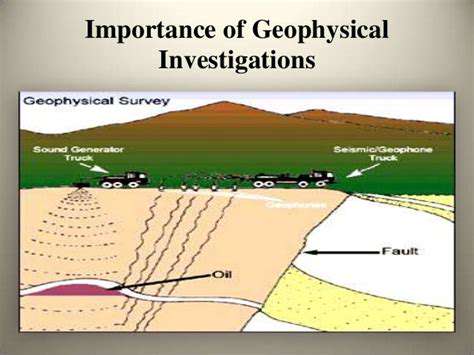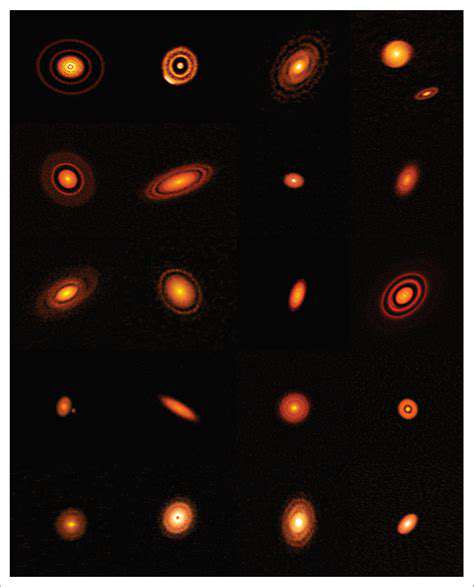The Importance of Spectrometers
Advanced spectrometers serve as the primary tools for decoding Europa's chemical composition. These instruments analyze light interaction with surface materials to identify molecular signatures that might indicate habitable conditions. Different spectrometer types work in tandem—some detecting visible light reflections while others analyze infrared emissions—to build a comprehensive chemical profile. This data helps scientists reconstruct the moon's geological history and assess its potential for supporting life.
Thermal Imaging and Heat Flow Detection
Precision thermal mappers will chart temperature variations across Europa's surface, hunting for thermal anomalies that might betray subsurface activity. These heat signatures could indicate locations where internal warmth maintains liquid reservoirs beneath the ice. By correlating thermal data with other measurements, researchers hope to identify the most promising sites for future in-depth investigation.
High-Resolution Imaging Systems
Cutting-edge cameras will capture Europa's surface in unprecedented detail, revealing features as small as a few centimeters across. These images will help scientists analyze stress fractures, ice flow patterns, and potential cryovolcanic features. Such visual data proves invaluable for selecting safe landing sites and understanding the mechanical properties of Europa's icy shell.
Mass Spectrometers and Gas Analyzers
These sensitive detectors will sniff out molecular traces in Europa's tenuous atmosphere and any surface venting. By identifying specific chemical compounds, particularly organic molecules, scientists can assess the moon's chemical complexity and potential for prebiotic chemistry. This data might reveal whether Europa's subsurface ocean interacts chemically with its icy ceiling.
Radar Penetrators and Ice-Penetrating Radar
Sophisticated radar systems will probe Europa's icy skin, mapping its thickness and internal structure. By analyzing how radio waves reflect off subsurface features, researchers hope to detect liquid water pockets and characterize the ice-ocean interface. This technology could finally answer whether a global ocean exists beneath the ice and how deep it might be.
Advanced Robotic Arms and Sample Collectors
Robotic sampling systems represent the mission's hands-on component, allowing direct interaction with Europan surface materials. These systems must operate flawlessly in extreme cold while collecting and preserving samples for analysis. Successful sample return could provide definitive evidence about Europa's habitability and potential biosignatures.
Beyond the Search for Life: Understanding Europa's Evolution

Exploring the Vastness of the Universe
Cosmic exploration transcends mere biological searches—it's about comprehending universal laws and our place within them. Each celestial body we study, from nearby moons to distant galaxies, adds another piece to the grand puzzle of existence. This intellectual journey pushes human understanding to its limits while inspiring new generations of explorers and thinkers.
Unveiling the Secrets of Exoplanets
The study of alien worlds orbiting distant stars has transformed planetary science. By characterizing these exoplanets—measuring their atmospheres, orbits, and compositions—we gain perspective on our solar system's uniqueness or typicality. Exoplanet research continues to redefine what we consider a habitable environment and where we might find life.
The Importance of Astrobiology
This interdisciplinary field bridges cosmic and biological sciences, seeking to understand life's cosmic context. Astrobiologists study everything from prebiotic chemistry to planetary habitability factors, creating frameworks to guide the search for extraterrestrial life. Their work helps determine which celestial bodies merit closest examination.
Analyzing Extremophiles on Earth
Earth's most resilient organisms provide crucial analogs for potential extraterrestrial life. Creatures thriving in acidic hot springs, deep crustal rocks, or Antarctic lakes demonstrate life's astonishing adaptability. By understanding these extremophiles' survival strategies, scientists can better predict what forms life might take in alien environments.
The Search for Habitable Zones
Astronomers meticulously calculate orbital distances where planets could maintain liquid water—the so-called Goldilocks zones. However, recent discoveries show habitability depends on complex factors beyond simple distance from a star. Modern habitable zone calculations now consider atmospheric composition, tidal heating, and even subsurface environments.
Understanding the Evolution of Life
Earth's biological history offers the only template we have for life's development. By studying how simple organisms evolved into complex ecosystems, scientists develop testable hypotheses about life's potential elsewhere. This evolutionary perspective helps distinguish universal biological patterns from Earth-specific accidents.
The Ethical Implications of Finding Extraterrestrial Life
First contact scenarios—whether with microbes or intelligent species—require careful ethical consideration. Such a discovery would challenge religious, philosophical, and scientific worldviews while raising practical questions about planetary protection protocols. Humanity must prepare intellectually and ethically for the possibility we're not alone in the universe.











